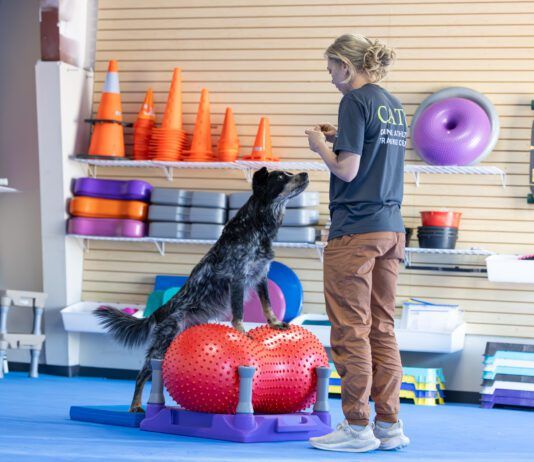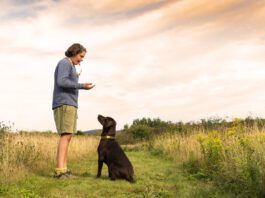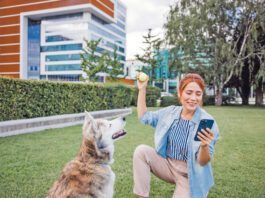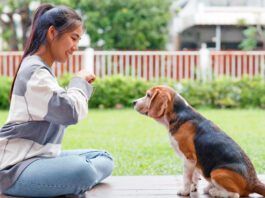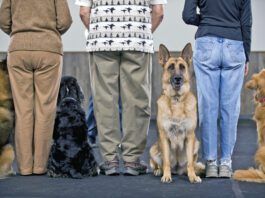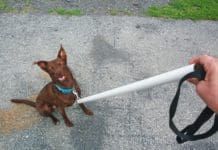Debunking the Dog’s “Guilty Look” Myth
I just talked to a potential client who is interested in bringing his 7-month-old Golden Doodle to train with us at AutumnGold. His dog, Penny, has the usual young dog issues - jumping up, a bit of nipping during play, still the occasional slip in house training, etc. Penny also raids the kitchen garbage bin, removing and shredding food wrappers, napkins, and any other paper goodies that she can find. The owner tells me that he is particularly upset about this last behavior because he is certain that Penny knows she has done wrong". He knows this because . . . wait for it . . . "Penny always looks guilty when he confronts her after the dreaded act."""
Help With Door-Crazy Dogs
you risk "flooding" the dogs
Teach Your Dog To Settle Down
position a mat or bed near you, and invite your dog to lie down there. You can use a food lure to encourage her to rock onto one hip and mark this posture (with the click of a clicker or a verbal marker such as the word Yes!") and a reward.üReward her with small bits of tasty treats for initially short
Rocket Recall
but keep in mind that the leash is present only to keep your dog with you
The 12 Rules of Rocket Recall
How do you perfect your dog's recall skills? Practice! Use the reinforcers that have the highest value for your dog for recall practice and reward generously.
The ABCs of Training
We have Edward Thorndike (1874 - 1949) to thank for teaching us about The Law of Effect. While studying behaviorism, he observed and described The Law of Effect, which states that behaviors change as a result of the consequences to actions. Boundless.com has a nice succinct explanation of The Law of Effect:
Clean Up Your Cues!
It's important to know what your cues are for your dog. Yes, I bet you think you know, but in reality your dog may think your cues are very different than what you think they are.
Sarah Foster’s Dog Cue Dictionary
It helps to keep track of exactly what it is that you expect the dog to do when you use a certain cue. If your dog is often confused about a particular cue or behavior, you might look over your own dictionary to determine whether your definition or cue has drifted away from what you originally taught your dog, or whether you have cues or behaviors that are easy to mistake for another one.
9 Great Warm Up Games and Exercises for Your Dog
Every dog should be walked at least two to three minutes prior to starting activity. For more strenuous activities, walk longer and include some jogging toward the end. There is no better gait for overall exercise than a brisk walk.
Preventing Exercise Injury for Your Dog by Warming Up and Cooling Down
Professional human athletes never skip a proper warmup. That's because research has proven, repeatedly, that preparing your muscles for upcoming physical activity reduces the risk of physical injury. And for them, an injury could impact their wallet with down time.
Teaching Trade
It's important to be able to ask your dog to give something to you, especially something he is not supposed to have. If you take away only those things that are forbidden to him, he will learn to play the keep-away game, or worse, he may learn to resource-guard. If your dog already guards resources, you may need to do some behavior modification before it is safe to play the trade" game with him. Ask a professional for help with this if you don't think it's safe."
Five Things to do When Your Dog Grabs the Leash and Doesn’t Want to...
The game of leash-tug is encouraged by some agility competitors, as a reinforcer for their dogs at the end of an agility run. However, many dog owners (myself included), find it an annoying and sometimes even dangerous behavior. Here are five things you can do if you're in the latter group and would like to get your dog to stop playing leash tug:


